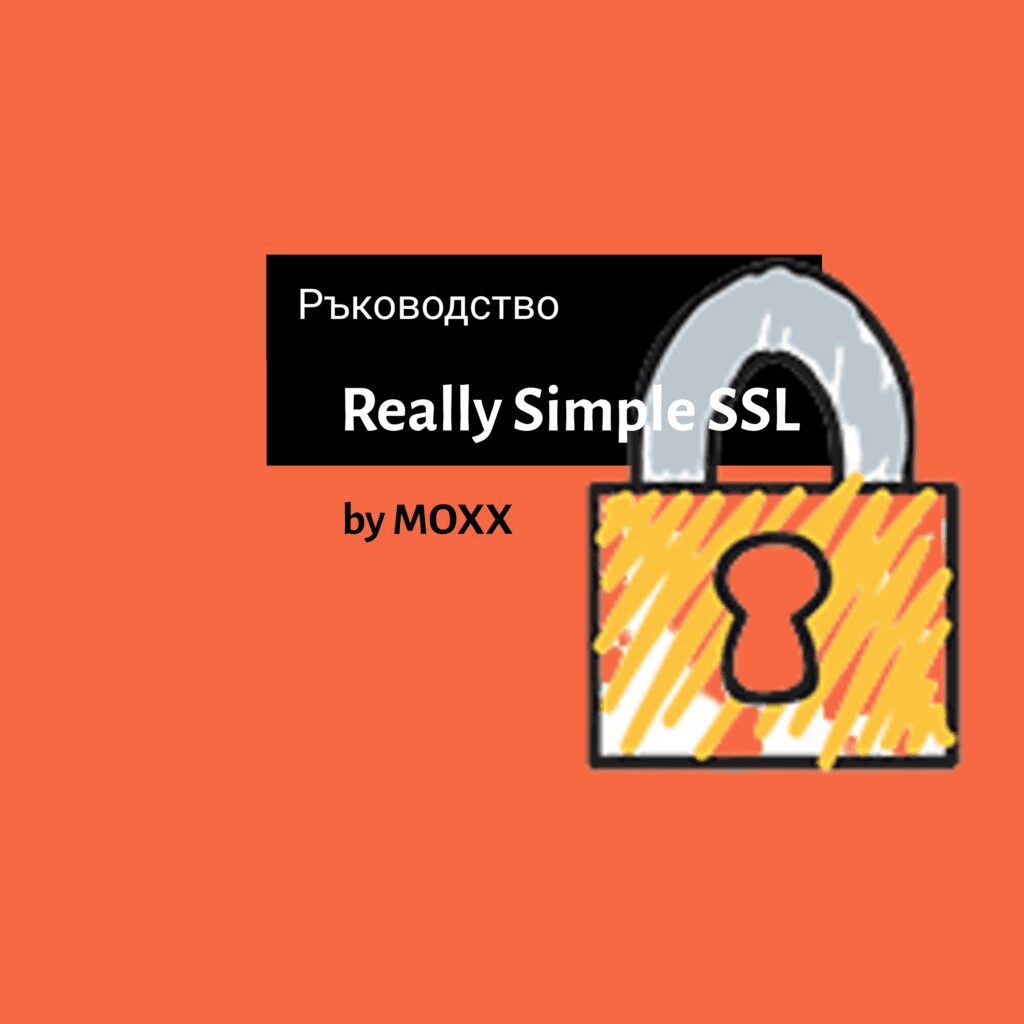Why is an SSL certificate important, and what is it exactly?
The SSL (Secure Sockets Layer) certificate is crucial for websites for several reasons. First, it provides an encrypted connection between the website and its users, ensuring the protection of sensitive information such as personal and financial data from malicious attacks. This reduces the risk of third parties intercepting the information.
Second, the SSL certificate gives visitors confidence that they are connected to a legitimate website and not a fake copy. This is achieved by verifying the website’s identity from a validated and trusted certificate authority. This way, users can be sure they are interacting with the correct website and protect themselves from phishing attacks and scams.
Third, the SSL certificate enhances a website’s ranking in search engines. Many search engines, like Google, prioritize websites that use SSL certificates, labeling them as “secure.” This can increase a website’s visibility and trust in search results, which is crucial for attracting visitors and potential customers.
In conclusion, the SSL certificate is essential because it provides an encrypted connection, confidence in the website’s identity, and improves its visibility in search engines. This helps protect users’ sensitive information, prevents fake websites, and enhances the website’s trustworthiness and traffic.
Related Articles:
What is a phishing attack?
A phishing attack is a type of scam in which malicious individuals attempt to deceive users into disclosing personal information, such as usernames, passwords, banking details, or other sensitive data. They usually impersonate trusted organizations, banks, online platforms, or even acquaintances to trick users into revealing their personal information.
Phishing attacks are executed using various methods. One of the most common ways is sending fake emails (phishing emails) that appear as official messages from familiar organizations. These emails typically request users to click on a link that redirects them to a subdirectory or a fake website, where they are asked to enter their personal data. These fake websites are created to resemble the original and deceive the user.
In other cases, phishing attacks are carried out through social networks, messages, or phone calls. For instance, malicious individuals may create fake social media profiles to lure users into disclosing personal information. They can also call users, posing as bank employees or other organizations, and encourage them to provide their data.
The goal of phishing attacks is to gain access to users’ personal information, which can then be exploited. This may involve conducting unauthorised transactions, identity theft, abusing bank accounts, or using personal information for other forms of fraud.
To protect themselves from phishing attacks, users should be cautious and employ some basic security measures. This includes verifying the source of the message, carefully inspecting URLs, using strong passwords, updating software and the operating system, and being informed about different types of phishing attacks to recognize and avoid potential threats.
How to install and configure the Really Simple SSL WordPress plugin
The HTTPS transfer protocol has become an essential part of websites because it helps keep your website and your users’ data secure. Since 2018, major search engines have given higher rankings to secure websites. Without HTTPS, every request you send is insecure with every post edit or plugin setting change. This article will show you how to easily activate SSL on your WordPress site using the Really Simple SSL plugin.
Configuring the Really Simple SSL Pпugin in WordPress
To use Really Simple SSL on your WordPress website, follow these steps:
- Log in to your WordPress site with an administrator account.
- On the Dashboard in the left sidebar, click “Plugins,” and then click “Add New.”
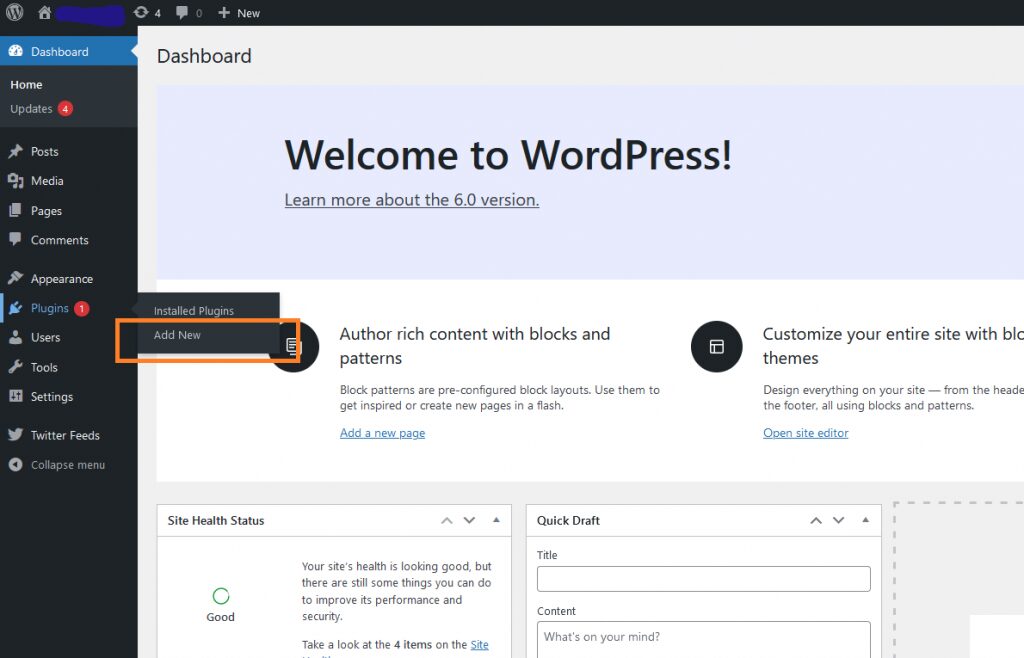
- In the search field, enter “Simple SSL.” Install and activate the plugin.
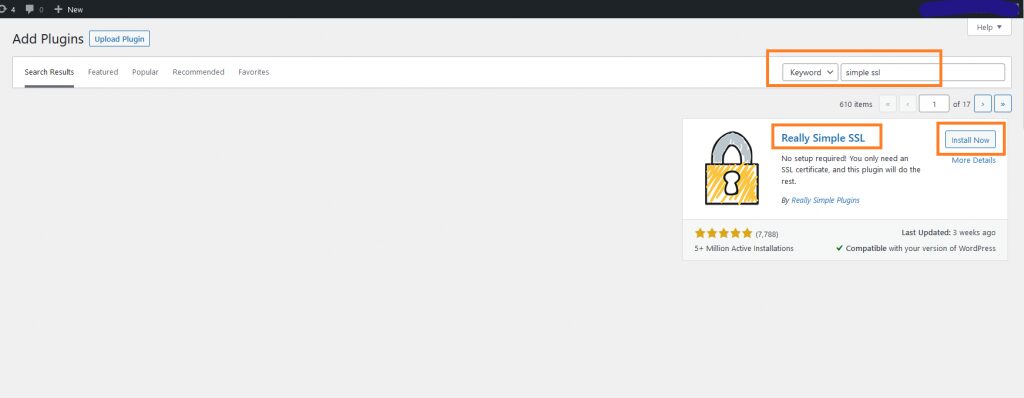
- In the left sidebar, find the “Settings” menu and click on “SSL.”
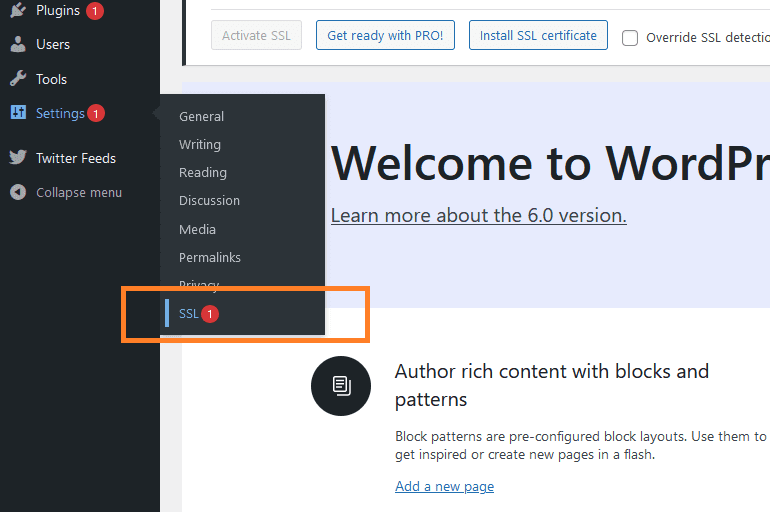
- Click the “Install SSL Certificate” button if your site doesn’t have an SSL certificate installed; otherwise, proceed to step 8.
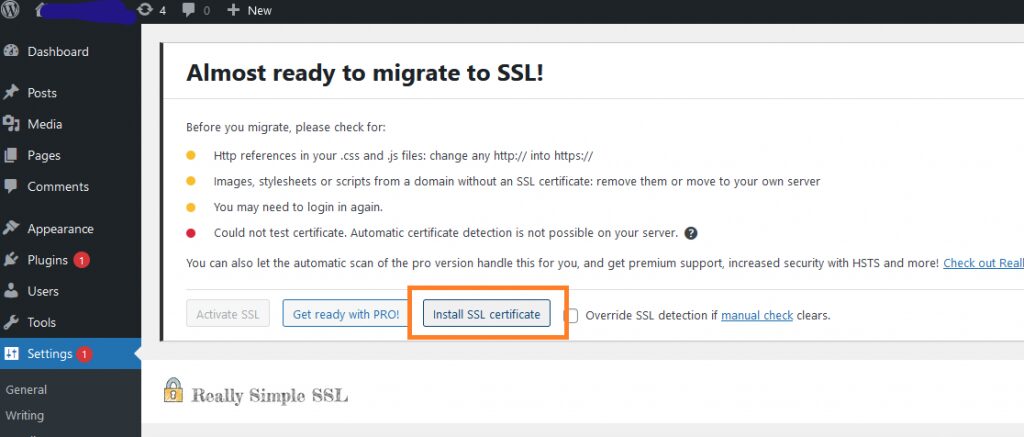
If there’s a certificate, the Really Simple SSL plugin will automatically detect it.
- The SSL installation process will discover the system settings and attempt to install a certificate from Let’s Encrypt. Wait for the process to finish and click the “Save and continue” button.
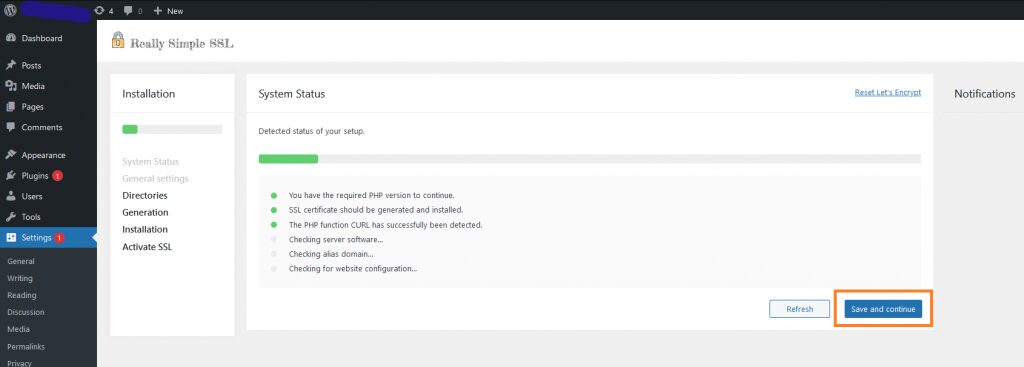
- Enter the site’s email address, accept Let’s Encrypt’s Terms and Conditions, and save and continue. The assistant will automatically install and activate the newly created certificate.
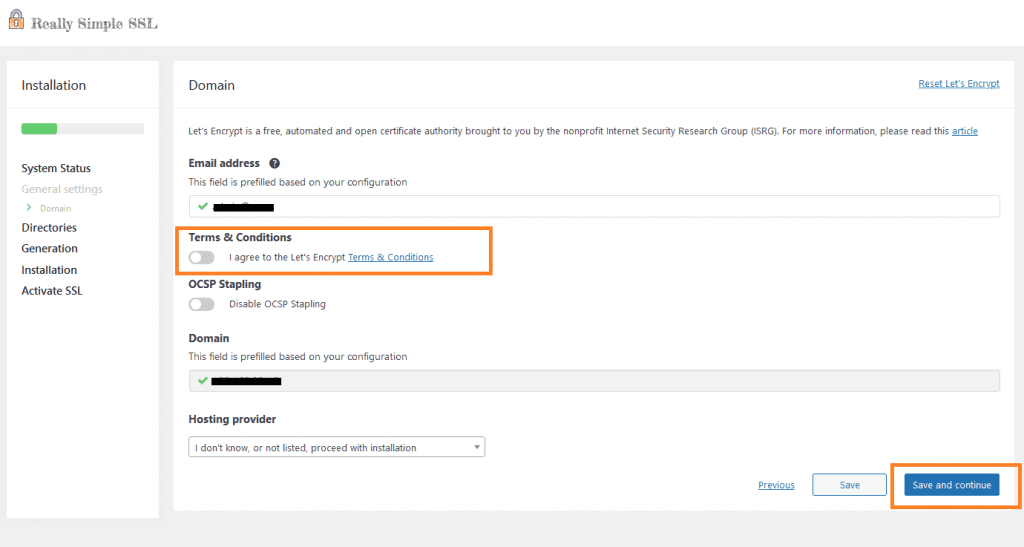
- If a certificate is already installed on your site, simply click the “Activate SSL” button:
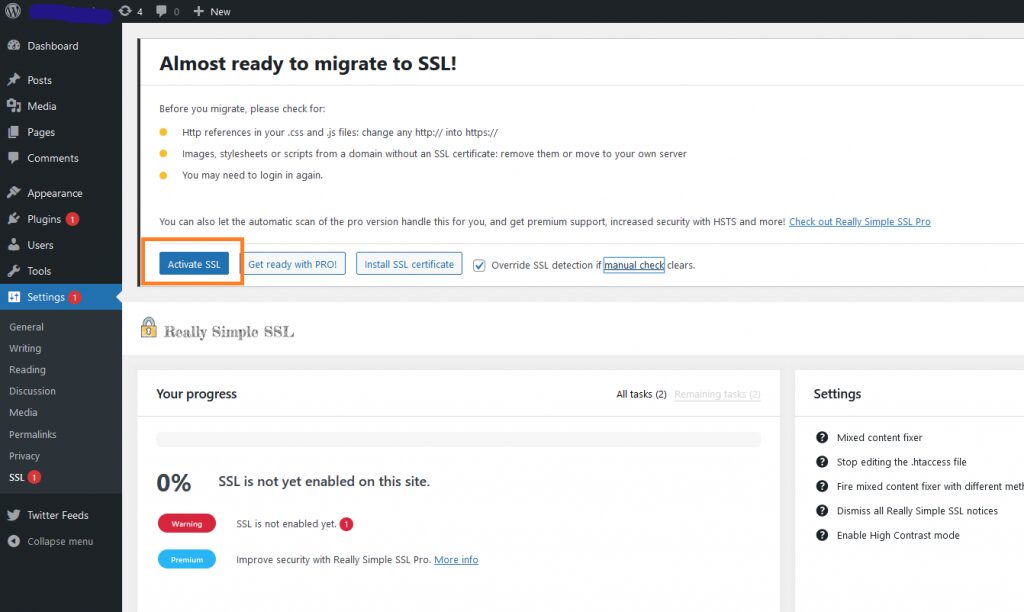
Warning: You may log out after the process is complete.
- Your site now has HTTPS, and the installation is complete.
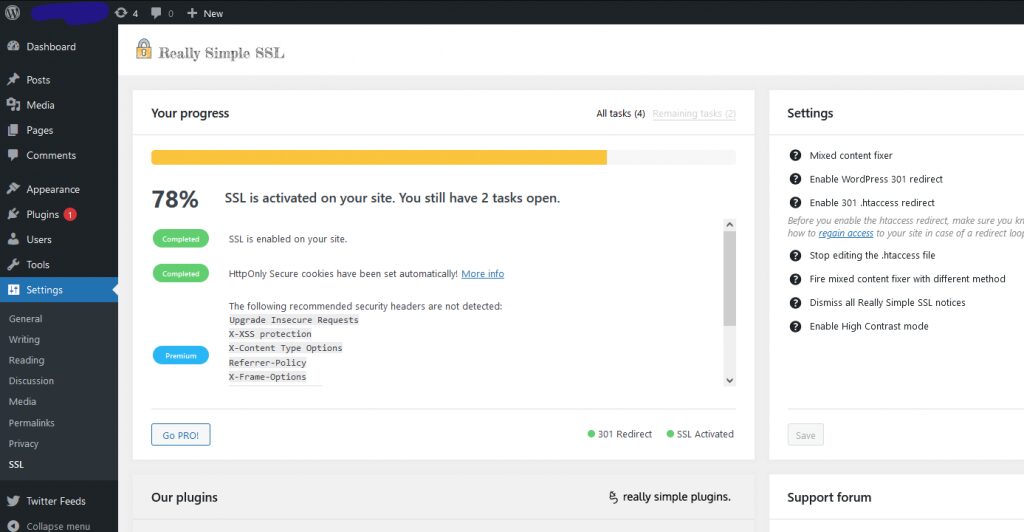
Warning: You may log out after the process is complete.
If you found this guide helpful, check out how to install Rank Math, an SEO plugin.

